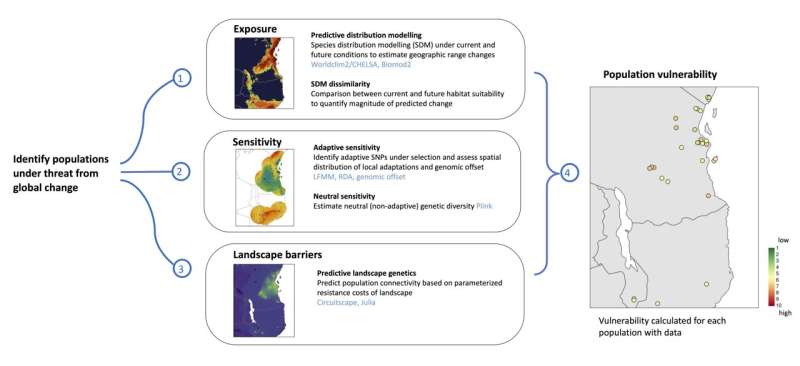Researchers have developed a new climate change prediction tool, ‘Life on the Edge,’ that combines genomic, geographic, and environmental data to assess population-level vulnerability to global change. This innovative approach goes beyond species-level assessments, providing crucial insights to guide conservation efforts and combat the biodiversity crisis. The tool can be applied to any species or geographic area, offering a powerful solution to safeguard wildlife populations. Climate change and biodiversity are two of the most pressing issues facing our planet today.

Unlocking Population-Level Insights
The traditional approach to climate change vulnerability assessments has often focused at the species level, failing to account for the crucial differences between populations within a species. ‘Life on the Edge’ addresses this limitation by leveraging population-level genomic data and spatially explicit models.
By integrating genomic, geographic, and environmental information, the researchers created a standardized toolbox that can predict the ‘exposure’ of each population to climate change, quantify their ‘neutral sensitivity’ and ‘adaptive sensitivity,’ and assess any ‘spatial barriers’ that may hinder their ability to shift their distribution to track suitable climate. This comprehensive analysis provides an unprecedented understanding of population-level vulnerability, allowing researchers and conservation practitioners to prioritize populations in need of urgent action.
Applying the ‘Life on the Edge’ Toolkit
To demonstrate the versatility of the ‘Life on the Edge’ toolbox, the researchers applied it to three East African frog species and two European bat species. By analyzing the genomic, geographic, and environmental data for these species, the tool was able to generate predictions of population vulnerability across Tanzania, Kenya, Malawi, and Mozambique, as well as in Europe.
This flexibility and species-specific parameterization make ‘Life on the Edge’ a powerful tool that can be used in real-world systems, enabling researchers and conservation practitioners to monitor changes at the population level and develop targeted strategies to combat the biodiversity crisis. The modular construction of the toolbox allows for easy integration of new data, ensuring its continued relevance and applicability in the face of an ever-changing global landscape.
Revolutionizing Conservation Efforts
The ‘Life on the Edge’ toolbox represents a significant advancement in understanding and predicting the impact of climate change on wildlife populations. By incorporating genomic information, the tool can provide more accurate and nuanced assessments of population vulnerability, guiding conservation efforts to where they are needed most.
As Orly Razgour from the University of Exeter, the senior author of the study, states, ‘Life on the Edge provides an accessible, holistic tool for understanding how climate change will affect wildlife population and guiding targeted conservation efforts. Incorporating genomic information can improve our predictions of wildlife vulnerability to climate change.’ This innovative approach is essential for enabling researchers and conservation practitioners to leverage the power of emerging genomic technologies and make informed decisions to protect our planet’s biodiversity.
